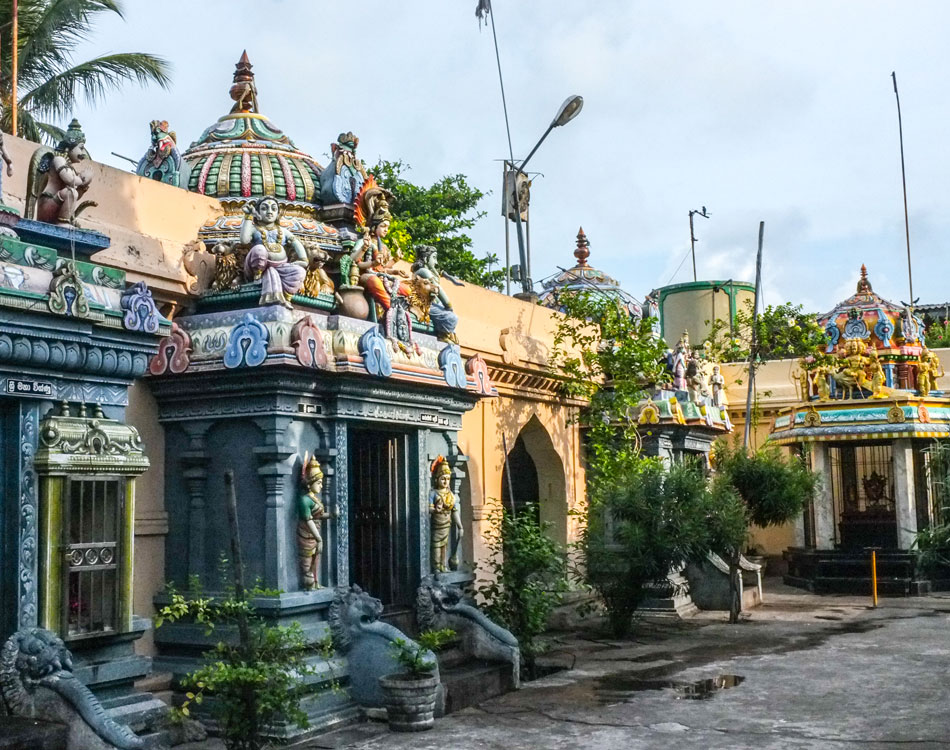KALESHVARAM KOVIL
Nestled behind the bustling Fort Railway Station and the vibrant Pettah Floating Market lies the enchanting Sri Kaleshwaram Kovil, also known as Sri Kaileswaram. Dedicated to Lord Shiva, the supreme deity revered in the Tamil Hindu faith, this temple embodies the spiritual essence of the community. Within its sacred grounds, devotees also pay homage to Lord Ganesha, Shiva's son, adding to the divine aura of the temple.
Situated in the neighborhood of Pettah, Sri Kaleshwaram Kovil is often mistaken for the nearby Sri Kailawasanathan Swami Devasthanam Kovil. However, it stands distinctly on its own, embodying the essence of Hindu worship in the heart of Colombo. Accessible from Maradana Railway Station, the temple is nestled along Temple Road, a serene enclave within Captain's Garden, just south of the railway line and north of Beira Lake.
Also known as The Captain's Garden Hindu Temple, Sri Kaleshwaram Kovil boasts two main shrines: the Kailasanathar Temple and the Lord Vignewar Temple, dedicated to Ganapathi or Pillaiyar. These temples, adorned with vibrant paintings and artworks, attract devotees and visitors alike, offering moments of spiritual tranquility amidst the urban hustle.
As the oldest and largest Hindu temple in Colombo, Sri Kaleshwaram Kovil stands as a testament to architectural grandeur and religious devotion. Adorned with intricate sculptures and carvings of Hindu deities, the temple's majestic blue roof rises 80 feet above the ground, drawing awe and reverence from all who visit.
Step inside, and you'll be greeted by a serene atmosphere, a stark contrast to the bustling streets outside. The simplicity of the interior, adorned with religious paintings and murals, invites introspection and prayer. Listen closely, and you may hear the soul-stirring strains of classical devotional music, adding to the temple's ethereal ambiance.
Marvel at the intricately painted ceiling, adorned with exquisite images and statues, as you immerse yourself in the spiritual aura of the kovil. While the temple remains a sacred place of worship, it warmly welcomes tourists and photography enthusiasts, offering a glimpse into Hindu traditions and culture.
Located amidst a somewhat isolated loop, Sri Kaleshwaram Kovil stands as a serene oasis amidst the bustling cityscape. Its peaceful surroundings and friendly atmosphere make it an ideal destination for visitors seeking spiritual solace and cultural enlightenment.
Experience the timeless allure of Sri Kaleshwaram Kovil, an architectural marvel and a symbol of spiritual devotion, on your next visit to Colombo.
Day Tours
See more
See less
Round Tours
See more
See less
Things To Do
See more
See less

